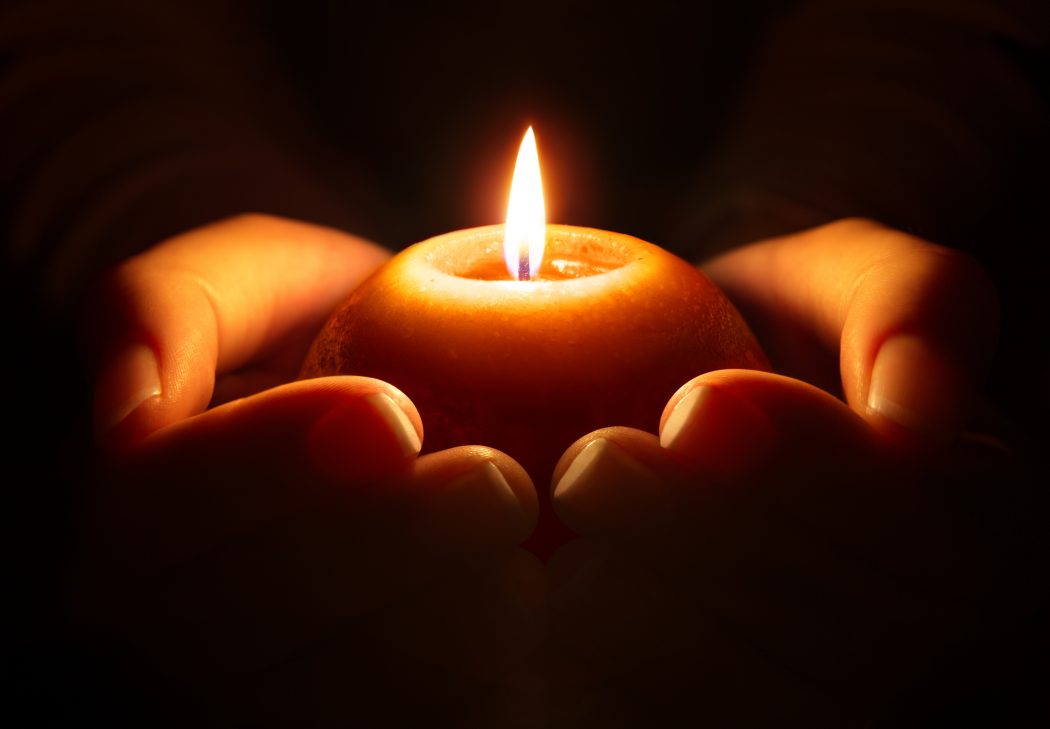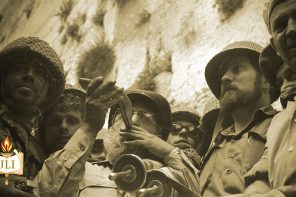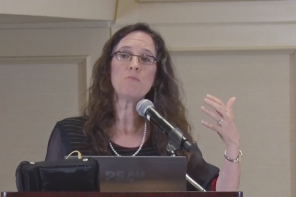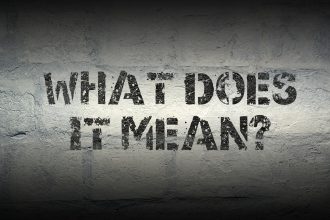By Rabbi Adin Even-Israel Steinsaltz
The First Temple was built to house the Holy Ark and the tablets of the Ten Commandments. The structure could thus be considered the dwelling place of the Shechinah, which is the Malchut of Atzilut or the manifestation of Divine light. And indeed, for centuries, the spiritual power emanating from the tablets of the Decalogue in the Holy of Holies on earth was stronger and more effective than the emanations from the shrine centers of holiness in the upper worlds. Difficult as this may be to comprehend, these Ten Commandments inscribed by God radiated a certain depth and fullness of spiritual power that was more influential than that which came from the spiritual worlds themselves. This was possible precisely because they were engraved on stone, the most material of substances, and because the Ten Commandments are the essence of all of the Torah, which is the direct expression of Divine Wisdom. The Temple simply contained the Revelation, which had not yet descended and changed from world to world, but which had been written on stone and given to the people through Moses.
There are two things here that arouse our incredulity. One is the fact that this world to which the Divine revealed His Wisdom is a material world and relatively dense to penetration of spirit. The other is the fact that this material world is a natural world, with laws of its own. In a sense, however, the stone tablets of the Decalogue were not a part of the material world, even though they were certainly of substance; they did not abide by the laws of nature. The letters were indeed engraved on stone, but they were forces of an entirely different order; they belonged to the dimension of Divine light and emanated an influence that was higher than anything else in the World of Action where they were kept.
In accordance with the original order of things, the World of Action is influenced by the light of the Shechinah through its own “Holy of Holies” or brain center, which in turn descends from the higher worlds. When the Ten Commandments were given to the Children of Israel and subsequently were housed in the Holy of Holies of the Temple, another source of Revelation intervened. The stone tablets do not diffuse their revelation and scatter it in all directions like the light from the higher worlds, which descends from gradation to gradation until it penetrates the World of Action and all its material parts in accordance with natural law. The Ten Commandments made a great leap; originating in Divine Wisdom, they burst through all the intervening worlds—or rather bypassed them—in order to reveal themselves to the material world without paying any attention to the laws of nature in this world. They avoided the various processes of contraction and change that characterize the evolvement of this world; and altogether, it was something that did not belong to this world. It was a material concretization of a much higher mode of existence; its light was far beyond anything else that the world had ever experienced. That is to say, the tablets of the Ten Commandments belonged to the dimension of miracle, an act of God.
Nevertheless, they were limited in space and substance, so that the Shechinah was present only when they were still kept ritually safeguarded in the First Temple. After they were removed, in the time of the Second Temple, the Shechinah was no longer manifest in the same way. The tablets of the Ten Commandments were the last physical remnant of the Divine descent to the people of Israel; they represented enlightenment at its highest level, when Divine revelation burst through the clouds of the rigid reality of worlds upon worlds of existence, and came to the people without altering itself by contraction, deformation, or concealment.
During the period of the Second Temple, therefore, the Shechinah was not dwelling among the people in the same way as when the tablets were present. Nevertheless, the Shechinah did dwell in the Holy of Holies in the way that Divine influence is ordinarily focused—by gradual descent through the intervening worlds and by assuming the forms, or putting on the garments of the Kingdoms of Emanation, Creation, Formation, and finally, of the World of Action. Consequently the light from the Holy of Holies in the time of the Second Temple belonged to the essence of holiness as transmitted through the brain center (Holy of Holies) of the World of Action. It was a light that originated beyond the reality of this world and radiated to all the world, while the Temple itself was the crossroads of the life of this world. No one could enter therein (the Holy of Holies) unless he was the High Priest, and even he was permitted to enter only on the Day of Atonement. Thus, even if the manifestation was not the same as in the time of the First Temple, the Second Temple could still be considered the dwelling place of the highest sanctity.
But when the Second Temple was destroyed, it could no longer function as a focal point of Divine holiness and, as it is written, God transferred this function to the confines of the Halachah. “Hence, each individual who sits by himself and occupies himself with Torah (in thought, word, and action), the Shechinah is with him” (Brachot 8a). The phrase “the Shechinah is with him” means in the order of the gradual descent and investment of the Malchut of Atzilut in the Malchut of Briah, of Yetzirah, and of Asiyah. In other words, it is not a revelation experience—even if the Shechinah is present. The light and inspiration that follows the presence of the Shechinah simply depends on the amount of holiness the person is able to bring down.
What is more, this occupation with Torah is, for the most part, a very practical matter. Most of the 613 commandments are active precepts, even if only in the sense that one must pray and study with one’s lips and voice, recite certain blessings aloud, keep the Sabbath by doing or refraining from doing definite actions, and so on. Torah is related to this world directly by thoughts, speech, and deeds. One cannot be said to have fulfilled one’s obligations by contemplating noble concepts or aspiring to spiritual heights; it is the doing that counts.
“The Lord by Wisdom founded the earth” (Proverbs 3:19) indicates that Divine Wisdom has established this world of ours and that His Shechinah is part of it. For man, this Shechinah is symbolized by speech, which is the word of the mouth; and “saying” Torah expresses His Wisdom. As the Zohar puts it: “The father (Wisdom) begat the daughter (Malchut) which is Oral Law” (Zohar III, 187a), and the Oral Law is the Halachah, or the way of life according to the commandments.
This brings us back to the recognition that the basis of all things is Divine Wisdom that reveals itself in Torah. To say that God’s light is now focused in the narrow confines of Halachah means that the Divine manifests His Will in the ordinary realities of the world. Once, in the period of the First Temple, His Will was manifested through the tablets of the Ten Commandments, bringing His Wisdom to the people directly from the highest height; and in the time of the Second Temple this was accomplished by the Divine light descending through all the higher worlds, with all the distortion and contractions this involved. Now, the Holy of Holies is to be found in the only place left to the Divine sanctity in the study of Torah and the deeds of Torah.
This is what is meant by the passage “always let your clothes be white, and let there be no lack of oil on your head” (Ecclesiastes 9:8), which the Zohar explains. For the supernal light that is kindled on one’s head, namely the Shechinah, requires oil, and oil is the symbol of being clothed in wisdom, namely the 613 commandments of the Torah. Man is here likened to a candle of God; the fire is the Shechinah, giving light in all directions, and the part that burns is the wick, or the animal-soul. What maintains the burning is the oil—the holy symbol of wisdom—the good deeds or the mitzvot of the Torah. In other words, the physical life and the body of man have to be burning in the fire of right action in order to enable the Shechinah to give light. The burning of the animal-soul is not a total destruction, however, because the soul which gives life to the being cannot be demolished. It is rather a transformation, a transmutation from darkness to light, from bitterness to sweetness, which in turns brings about that which is called “ascent of the feminine waters,” the ascent of the lower, passive aspects of the universe toward the higher revealed forces above them. Such is the work of the Tzadik—a conversion of evil to good by transforming the animal-soul. That is, the animal-soul remains; it is not annihilated, but its desires and lusts are converted from one extreme to the other. The animal-soul of the Tzadik no longer knows the desires of the flesh; it wants only the holiness of its own consummation. It seeks the transformation of the garments or shells of the animal being in thought, word, and deed, making them into sparks of Divine light.
In this way, the Tzadik removes himself from the eternal conflict between the animal-soul and the Divine Soul and manages to remain fixed in his own essence on the level of the Divine within him. He achieves it by worshipping God with both his bad impulse and his good impulse. The bad impulse thus ceases to be evil and becomes a part of the totality of the Divine oneness in a man.
The person who is not a Tzadik, he who is a Benoni, has to continue to struggle. His life can, nevertheless, be just as holy, for he also demolishes the garments of the animal-soul in all their manifestations in thought, word, and deed. The steady devotion to God extricates the shells from the realm of the animal and transmutes them into instruments of holiness. Indeed, every Jewish person who is occupied wholly with matters that are connected with such devotion, whose speech and actions are directed from within to God, will undergo such a transformation. The sacrificial fire of Divine worship may not be able to change the essence of the animal-soul in a person, but the expressions of his soul are transmuted into something else.
The difference between the Tzadik and the Benoni would then be in the way the essence of the soul is changed. The Tzadik achieves it inwardly; from his own essential being, he effects a total transformation of his animal-soul. The Benoni is more concentrated on the outward manifestations of his animal-soul, even though, as he progresses, the animal-soul changes and becomes something other than what it was. The soul of the Benoni is extricated from the darkness of the shells; it is not annihilated in the light of Divine Wisdom, only its garments in thought, word, and deed are transformed in the 613 mitzvot of the Torah. Thus, the Benoni keeps changing himself constantly; he has to keep transmuting his inner essence by working on the outer manifestations of his being. His efforts are directed to a vigilant struggle to transform his animal-soul; and this is possible because the animal-soul is of Klipat Nogah, which is basically a spiritual category, even if it is not holy.
The core of the difference would, therefore, appear to be bound up with the animal-soul of man. The point is that this animal-soul is not necessarily of the essence of evil; it is of an undefined essence which, if not treated at all, belongs, like everything else neglected by man, to the realm of formlessness or to the realm of the shells. But when such essences are privileged to be corrected by man, they are raised to a higher level and undergo changes that are of the nature of transformation. This happens whenever the animal-soul, which is of Klipat Nogah, is so refined; there is a transformation from darkness to light, from bitterness to sweetness, whether in the fullness of perfection or only in external expression. In a certain sense, with every mitzvah, be it sanctified thought or action, at least at the moment of performance, man is transformed into a vessel of the Shechinah, an intermediary of the Divine light within him. At the same time, he becomes a means for the ascension of the “feminine waters,” and in this ascension, and in response to it, there also occurs an augmentation or an extension of the light of the Shechinah, which is a revelation of Divine light in the brain of the head. It is in such manner that the Divine light is drawn to the soul—at the moment when the lamp seems to be burning out, the flame clutches at the oil rising in the wick and reinforces itself again. It is thus that the soul functions as a candle of God.
Indeed, the soul of man, in its wholeness, is an expression of the truth that “the Lord your God is a consuming fire.” For “the Lord your God” is that which works on the reality of the world like a consuming fire; it utterly destroys all that it meets, and there is a constant process of such confrontation and burning. Earthly reality is fuel to the flame of Divine reality; everything is consumed by God. But earthly reality is not only matter and animality; it is also man. We too belong to the world. The difference is that the soul of man is capable of using this fire in order to transform and not to annihilate. Man raises things up to a higher level and thus preserves them. We are letting the previous essence burn up and, as in every burning, which is actually an essential chemical change, we are changing the composition of the reality of the world.
For the Lord your God is a consuming fire to be manifested by you. This demands contact with the world. Revelation is not an abstract Heavenly experience; it is a process of correct self-nullification in the greater dimension of an all-embracing reality. The Benoni is he who makes himself a candle of Divine light. He is not simply the average or middle between the good and the evil. He is intermediate between the one who has succeeded in transforming the entire essence of his soul and the one who is still changing. In terms of his daily existence the advanced Benoni behaves like a Tzadik, in spite of the fact that he is in inner conflict. The justification of his life is that, at every moment, he burns in the consuming fire of the Lord, for his soul is the candle of God.
Steinsaltz, Adin. The Long Shorter Way: Discourses on Chasidic Thought, ch. 53, pp. 351–357. New Milford, CT: Maggid Books, 2014
Reprinted with permission from the publisher





